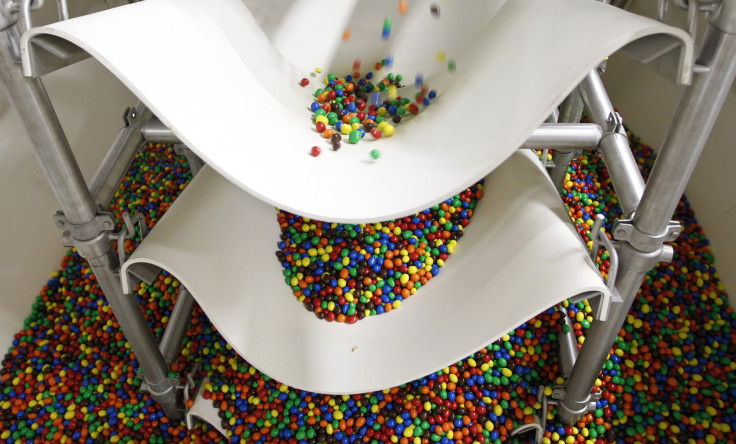M&M Color Dyes Linked To Hyperactivity In Sensitive Children, Claims Popular Change.org Petition

A Change.org petition that asks candy maker Mars Inc. to stop using artificial dyes on M&Ms is quickly gaining steam, on concerns the dyes may promote hyperactivity in certain children.
The petition, by Jamestown, N.Y., resident Renee Shutters and the Center for Science in the Public Interest, claims that certain artificial colorings, particularly the widely used Yellow 5, Yellow 6 and Red 40 dyes, aggravate hyperactivity in already sensitive children.
Shutters tells the story of her 9-year-old son, Trenton, whom she described as significantly less hyperactive after he stopped eating M&Ms.
“M&Ms used to be one of Trenton’s favorite candies, but we’ve found products in the United States like SunDrops, Yummy Gummies and Unreal that don’t use these dyes,” reads the petition. “Please join us in asking Mars Inc., manufacturer of M&Ms, to replace artificial dyes with natural coloring.”
In a plea to Mars and its CEO, Paul Michaels, the petition asserts: “You won’t lose customers by switching away from harmful dyes, but you will gain many and help create a safer food system for our families.”
In a statement emailed to International Business Times, though, Mars Chocolate North America denies that its dyes are unsafe.
“We have absolute confidence in the safety of all the ingredients we use, as do the U.S. Food & Drug Administration (FDA), the European Food Safety Authority (EFSA) and other leading food safety regulators globally,” reads the statement.
All of Mars’ dyes comply with safety regulations and laws -- including FDA regulations -- and they are labeled as ingredients on packaging, said the company.
“All the colors we currently use in our products comply with our own strict internal quality and safety requirements as well as all applicable laws… All colors are declared on the label.”
An FDA advisory panel concluded in March 2011 that there wasn’t enough scientific evidence to causally link these petroleum-based dyes and hyperactivity, according to the Washington Post.
That hasn’t stopped the petition from taking off quickly, though. It launched on Oct. 10 and is about 2,000 signatures away from its goal of 75,000 supporters. In eight days it earned about 50,000 signatures, making it the fastest-growing food-related petition on the popular Change.org in October so far, website staff told IBTimes.
The Center for Science in the Public Interest has previously petitioned the FDA to ban eight synthetic dyes from use in foods.
The FDA found in 2010 that color additives didn’t cause hyperactivity in ordinary children, but it added that for “certain susceptible children with ADHD and other problem behaviors, the data suggest that their condition may be exacerbated by exposure to a number of substances in food, including, but not limited to, artificial food colors.”
“Findings from relevant clinical trials indicate that the effects on their behavior appear to be due to a unique intolerance to these substances and not to any inherent neurotoxic properties,” said the FDA document.
In advance of Halloween, CSPI executive director Michael Jacobson warned parents away from M&Ms in a recent Huffington Post editorial.
He said European Union regulators already require warning labels, and not just ingredient labels, on foods containing these dyes. He added that U.K. regulators also cited studies suggesting that dyes could harm children in the wider population.
M&Ms sold in Europe don’t contain these dyes, thanks to the chilling effect of regulations there, wrote Jacobson.
The FDA didn’t respond to a request for comment by time of publication.
Mars didn’t disclose how much a switch to natural dyes in the U.S. could cost the company. But it hinted that it “is important to understand that certain considerations need to be made when selecting natural colors, and we are being very thoughtful as we go through this process.”
© Copyright IBTimes 2024. All rights reserved.






















